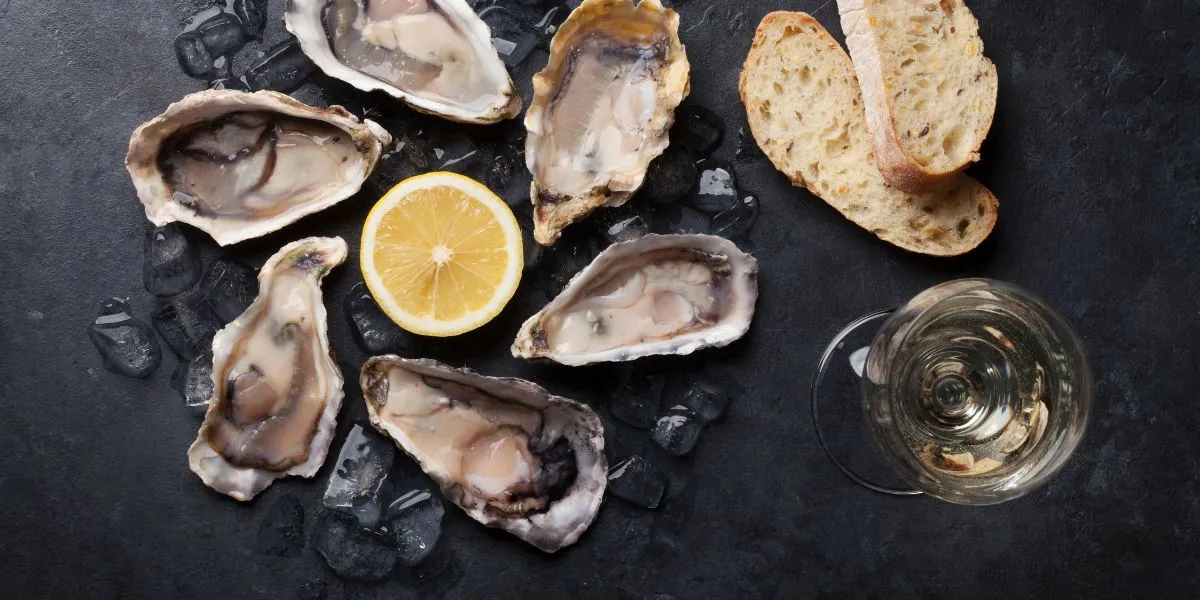Arinto: The Ambassador of Freshness in Portuguese White Wine

The dawn of the 19th century found Portugal in the grip of a ferocious storm. This was a country ravaged by fire and sword, its churches desecrated, populations decimated, and towns reduced to dust. Yet, from the chaos of the French Invasions, an unlikely beneficiary would emerge: the Arinto grape from Bucelas, the source of wines that would charm the very man responsible for Napoleon's defeat at the Battle of Waterloo.
That battle would change the world, but it was still a long way off. For now, as commander of the Luso-British troops, our man was preoccupied with the defence of Lisbon against the mighty armies of Marshal André Masséna (below, on the left). How could the brilliant French marshal, whom Napoleon himself had nicknamed the "Cherished Son of Victory," possibly be stopped?

Arinto: A Wartime Discovery in Bucelas
Well, the method of stopping him was equally brilliant and would come to be known as the 'Lines of Torres Vedras', one of the greatest and most effective defensive structures in European military history (map above, on the right). Built with great Portuguese sacrifice, the Lines resulted in the forced displacement of hundreds of thousands of people. And it was during their arduous construction that our man, Sir Arthur Wellesley—the future Duke of Wellington and victor of Waterloo—first became enchanted by the wines of the Arinto grape. After all, the Bucelas vineyards were right next door.
This enchantment led the Duke (below, left) to become an aficionado of Arinto, a grape that produced wines with a profile similar to the highly prized German Riesling. In an age of disease and insalubrious water, Wellington discovered more than just a safe drink for his officers and soldiers in Bucelas; he also found a lively, fragrant, and remarkably elegant tonic.

Arinto Wines and the 'Mad King' of England
Under the name 'Lisbon Hock', the Duke would later present this wine to the British court and its monarch, George III, the "Mad King" (above, right). The designation 'Hock' was the term given to the famous dry wines of the Rhine, a name that gave the Portuguese white an immediate stamp of quality.
The Mad King and British high society adored Arinto wines, and demand from little Bucelas quickly outstripped supply. And so it was, at the height of the Napoleonic Wars, that the international reputation of what is today one of the great ambassadors of Portugal's vinous freshness began to be forged.
Arinto wine had the ideal profile for the needs of the Luso-British army: besides being refreshing under the inclement sun, its high natural acidity ensured stability and longevity during long transport and storage. But its qualities did not end there.

A Grape for All Climates
Despite its origins in a mild and pleasant climate, Arinto was not daunted by more severe conditions. It travelled to many other parts of Portugal and proved its adaptability, whether in the humidity and Atlantic influence of the Minho or the wide diurnal temperature ranges of the Beira Alta highlands. In fact, where other varieties succumb to heat or oxidation, Arinto maintains its backbone and refreshing character.
In the Dão, this character is elevated by the altitude and the eroded granite soils. These factors shape wines with impressive structure, featuring a laser-sharp vivacity that takes the palate on a journey between ripe citrus and subtle wet stone notes. With Arinto, we have proof that energy and elegance are not mutually exclusive. On the contrary, in the Dão, these variables unite with almost mathematical rigour, in an equation where aromatic purity is the constant and the nervy tension tends towards infinity.

The Sensory Profile of Arinto
On the nose, a glass of Arinto reveals vibrant citrus notes of lime, lemon, grapefruit, and green apple. Nuances of pear or white peach may also appear, but the acidity is ever-present as the guiding thread. The palate reveals a fine, almost crystalline texture, with a surprising volume given its weightlessness. But while light, it is never trivial.
With bottle age, notes of honey, nuts, and flint emerge, along with a subtle unctuousness. Like a fine, old, well-tuned violin, the mature notes never lose their tension and sensory harmony.

Food Pairings for Arinto
Such sensory attributes make Arinto a star of Portuguese food and wine pairing. Its zesty acidity brightens delicate starters, saline seafood, and oily or grilled fish. Dishes like roasted bacalhau (salt cod) or oven-baked octopus also gain lightness and balance. Furthermore, goat's and ewe's milk cheeses are perfectly counterbalanced by the grape's mineral edge. By taming spice and enhancing exoticism, Arinto also doesn't shy away from bold curries or the most aromatic Asian dishes.

Arinto: Fit for Kings, A Top-Tier Grape
Arinto possesses a set of attributes uncommon for those seeking vinous excellence. For example, its natural acidity counteracts the degradation caused by heat and reduces the need for artificial acidification. The grape's thick skins protect the fruit and ensure clean aromatics even when conditions are unfavourable. This is not a grape of heavy or flabby flavours.
Given this profile, Arinto is an oenologist's ally in the face of climate change. In a world where many white varieties struggle to maintain their profile, Arinto remains steadfast and stoic. Added to this is the growing demand for elegant, gastronomic white wines with ageing potential. Therefore, its central role in the future of Portuguese viticulture is no longer just probable; it is inevitable.
Revealed to Europe in a context of war and sacrifice, it is true that today Arinto merely has to face exotic or heavily spiced dishes. However, just as the Lines of Torres Vedras protected the homeland in one of its most tragic periods, Arinto today protects the tradition of Portuguese elegance in a landscape where wines are losing their finesse due to global warming. From the banks of the Tagus to the banks of the Dão, from the past to the future, this has always shown itself to be an adaptable and, perhaps, courageous grape in its constancy of character. With such qualities, today as then, it is no wonder that Arinto produces wines fit for royalty. And it is this legacy of elegance and resilience that we seek to honour in every bottle of Arinto born at Quinta da Alameda.
Arinto: A Summary
Main Name and Synonyms
Arinto de Bucelas, Arinto Branco, Arinto Cercial, Arinto d'Anadia, Arinto Galego, Arintho, Pedernã (in Vinhos Verdes), Pedernão (in the Douro), Val de Arintho, Chapeludo (in the regions of Castelo de Paiva and Cinfães), Azal Galego, Pedreña (in Spain). This wide range of synonyms reflects the Arinto grape's historical breadth and its widespread presence across Portugal's main wine regions.
Geographical Origin
The village of Bucelas, in the municipality of Loures, Lisbon district, Portugal. In Bucelas, Arinto benefits from clay-limestone soils rich in marine sediment and from the climatic variations determined by its proximity to the Tagus River and the Atlantic Ocean. The Protected Denomination of Origin (PDO) "Bucelas" is exclusive to white wines and is centred on this grape.
Genetic Origin
Recent ampelographic and genetic analysis suggests that the Arinto grape is long-established in the Oeste (Lisbon) region, where it likely originated before spreading to other areas of the country. There is no record of close kinship with relevant foreign varieties; stories linking Arinto to possible German imports (such as Riesling) have no scientific basis. Historically and genetically, Arinto de Bucelas is one of Portugal's oldest and most representative white grape varieties, strongly linked to its home region but disseminated throughout the territory thanks to its quality, adaptability, and resilience.
Viticulture and Ampelography
Bunches: Medium to large, compact, and winged.
Berries: Small to medium-sized, round, with a greenish-yellow colour. They have a medium-thick skin, firm pulp, and a discreet flavour.
Canopy: The vine has large leaves and a vigorous growth habit that tends towards disorganisation, requiring careful canopy management.
Cycle: Budburst is late, with regular flowering and a late ripening period.
Vigour & Yield: It has high vigour, producing few bunches per cane, but these are generally of a good size. It is a highly adaptable variety with great plasticity, performing well in different soil types (from the limestone of the Tejo or Bairrada, to the granite of the Dão or Minho, to the schist-granite transition soils of the Douro). It has a moderate to low yield and is valued more for its quality and freshness than for volume.
Pruning: In fertile soils, pruning should be long or mixed; in less fertile soils, it should be short or mixed.
Disease Susceptibility
The variety shows moderate susceptibility to some common vineyard diseases.
Botrytis: Arinto is particularly susceptible to botrytis (grey rot), especially in conditions of high humidity or poor air circulation. To mitigate this risk, the variety should be planted on slopes or in well-aerated areas.
Mildew: The variety shows susceptibility to powdery mildew (Erysiphe necator), requiring prophylactic treatments and regular monitoring. It can also be affected by downy mildew (Plasmopara viticola); although it has some relative resistance, preventative treatments may be necessary in wetter years.
Other: Pruning wounds increase the risk of trunk diseases such as esca. Finally, the variety can be affected by grapevine leafroll and infectious degeneration. These two viral diseases are spread by mealybugs and other insects; their impact varies depending on the vector pressure in the vineyard. Arinto benefits from rigorous sanitary management, appropriate pruning, and good soil drainage.
Body and Structure
Arinto wines typically present a medium body, elegant structure, and a fresh texture, with pronounced acidity and minerality. It is vibrant and refreshing on the palate, with notable tension and persistence. It rarely shows unctuousness or excessive weight. However, more complex examples (with ageing on the lees or in oak, for example) can reveal a creamier texture and greater mouthfeel, without ever losing the precision and vivacity characteristic of the grape.
Tannins
Not applicable (tannins are not perceptible in the vast majority of Arinto wines).
Texture
Arinto wines show a fine and elegant texture thanks to their high acidity. In young versions, they are delicate and taut, with clarity and minerality; examples with extended ageing on the lees or in wood can exhibit a broader and creamier texture. The finish is generally long, clean, and persistent, with marked vivacity.
Acidity
The variety is renowned for its firm and high acidity. This acidity provides vibrant freshness, balance, and great ageing potential. It is the reason it is often used as an "improver" variety in blends.
Flavours
Arinto wines have fresh and vibrant flavours that often include notes of citrus fruits such as lemon, lime, and grapefruit, alongside green apple and pear. With age, they can develop complex flavours reminiscent of honey and nuts. They may also exhibit mineral touches and subtle tropical nuances.
Aromas
The aromas of Arinto wines are typically mineral and citrus-driven, with prominent notes of lime, lemon, green apple, and white flowers such as orange blossom. Aromatically, the variety is relatively discreet, without being exuberant or overly intense. In some cases (mainly in wines aged in wood or harvested earlier), floral notes emerge, integrated with the grape's inherent mineral nuances.
Colour
The wines are a clear and bright citrine yellow or straw yellow with greenish reflections. This light, fresh colour reflects the youth and vivacity typical of the variety.
Ageing Potential
Arinto wines possess high ageing potential thanks to their excellent acidity and good mineral structure. They can evolve favourably over several years, showing increasing complexity and developing more mature notes, such as dried fruit, honey, and deeper mineral nuances.

Article reviewed by Patrícia Santos, head winemaker at Quinta da Alameda. She holds a degree in Oenology from UTAD (University of Trás-os-Montes and Alto Douro, 2001), and trained under the guidance of Anselmo Mendes. Her experience spans the wine regions of Dão, Bairrada, and Beira Interior, as well as Arribes.
